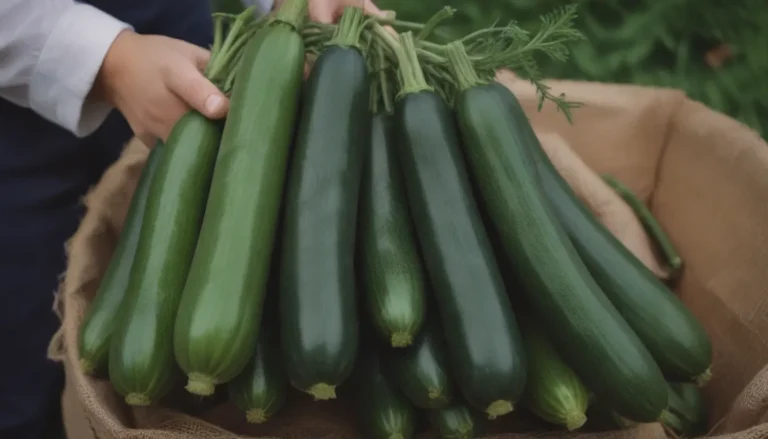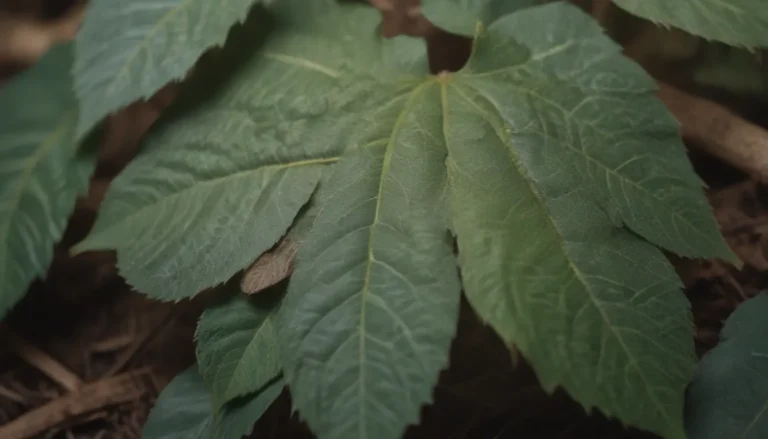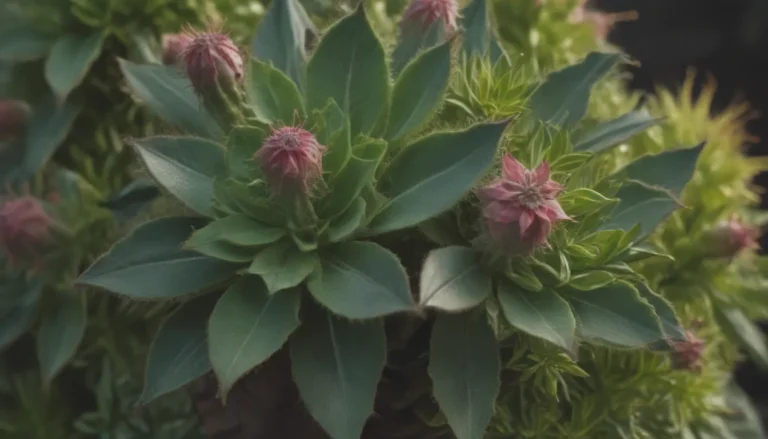Transform Your Garden with 18 Insect Repellent Plants

Are you tired of battling bugs in your garden every year? Have you considered using plants to naturally deter insects and pests? Companion planting with insect-repellent plants is a great way to keep your garden healthy and thriving without relying on harmful chemicals. In this comprehensive guide, we’ll explore 18 insect-repellent plants that can transform your garden into a pest-free paradise.
Understanding Companion Planting
Companion planting is the practice of growing different plants together to achieve specific results based on anecdotal evidence. Just like humans, insects have their preferred foods, and they usually find these foods by scent. By mixing in plants that confuse their sense of smell, you can make it harder for insects to locate their favorite snacks. While this may mean you can’t plant in tidy rows and large blocks of a single vegetable, the benefits of companion planting far outweigh the minor inconveniences.
Plants with pungent scents are among the most effective insect deterrents, and many of these are herbs that serve a double purpose in your garden. Not only do they repel pests, but they also attract beneficial insects that can help pollinate your plants and keep harmful pests in check. It’s a win-win situation for any gardener looking to create a healthy and vibrant garden ecosystem.
The Benefits of Insect-Repellent Plants
In addition to keeping pesky insects at bay, insect-repellent plants offer a range of benefits for your garden:
- They can help reduce the need for chemical insecticides, making your garden safer for you and the environment.
- Some insect-repellent plants also attract beneficial insects that prey on harmful pests, providing natural pest control.
- Many of these plants are also edible or have medicinal properties, adding extra value to your garden.
Now, let’s dive into the world of insect-repellent plants and discover how they can transform your garden.
1. Basil (Ocimum basilicum)
Basil is not just a flavorful herb for your kitchen—it also repels a variety of insects, including asparagus beetle, carrot fly, flies, mosquitoes, and whitefly. To maximize its insect-repelling properties, gently touch the leaves to release their oils as you walk by. This annual herb is a versatile addition to any garden.
- USDA Growing Zones:
- Sun Exposure:
- Soil Needs:
2. Borage (Borago officinalis)
Borage is a powerhouse when it comes to repelling insects, particularly imported cabbageworm and tomato hornworm. This plant also attracts beneficial insects and native bumblebees, making it a valuable addition to your garden. Borage prefers cooler temperatures and can self-sow for continuous growth.
- USDA Growing Zones:
- Sun Exposure:
- Soil Needs:
3. Calendula (Calendula officinalis)
Calendula, also known as pot marigold, is a versatile plant that repels asparagus beetle, nematodes, and tomato hornworm. It’s also a favorite among beneficial insects, making it a valuable ally in your garden. This edible flower adds beauty and functionality to any garden.
- USDA Growing Zones:
- Sun Exposure:
- Soil Needs:
4. Catmint (Nepeta)
Catmint is a potent insect repellent that keeps aphids, cabbage looper, Colorado potato beetle, cucumber beetle, flea beetle, Japanese beetle, and squash bugs at bay. Be cautious, as some varieties of catmint can be aggressive spreaders. This perennial herb is a must-have in any garden.
- USDA Growing Zones:
- Sun Exposure:
- Soil Needs:
5. Chives (Allium schoenoprasum)
Chives not only add flavor to your dishes but also repel aphids and Japanese beetles. Keep this herb in check by harvesting it regularly to prevent it from taking over your garden. And don’t forget, chive flowers are edible too!
- USDA Growing Zones:
- Sun Exposure:
- Soil Needs:
6. Dill (Anethum graveolens)
Dill is a versatile herb that repels cabbage moths and spider mites while attracting beneficial insects like parasitic wasps. Despite losing some of your dill to caterpillars, the reward of seeing beautiful butterflies in your garden is worth it. This biennial plant is hardy and easy to grow.
- USDA Growing Zones:
- Sun Exposure:
- Soil Needs:
7. Garlic (Allium sativum)
Garlic is not just a kitchen staple—it’s also a potent insect repellent. Planting garlic can help keep aphids, cabbage moths, codling moths, Japanese beetles, and rabbits at bay. Try interplanting garlic with roses to deter Japanese beetles effectively.
- USDA Growing Zones:
- Sun Exposure:
- Soil Needs:
8. Hyssop (Agastache rupestris)
Hyssop is a fragrant herb that repels cabbage moths, making it an excellent companion for cole crops. This perennial herb is a beautiful addition to any garden border and a valuable ally against pests.
- USDA Growing Zones:
- Sun Exposure:
- Soil Needs:
9. Mint (Mentha)
Mint is well-known for its insect-repelling properties, deterring aphids, cabbage moths, flea beetles, squash bugs, whiteflies, and even ants. To prevent mint from taking over your garden, consider planting it in pots or using sprigs among your plants. The scent of mint is a powerful deterrent for many insects.
- USDA Growing Zones:
- Sun Exposure:
- Soil Needs:
10. Onions (Allium cepa)
Onions are not just a tasty addition to your meals—they also repel aphids, cabbage looper, carrot flies, Colorado potato beetles, and rabbits. Planting onions alongside other vegetables can help protect them from pests and improve their overall health.
- USDA Growing Zones:
- Sun Exposure:
- Soil Needs:
11. Oregano (Origanum)
Oregano is a versatile herb that repels cabbage moths. While it can be challenging to interplant due to its spreading nature, placing freshly cut sprigs near your cole crops can help keep pests at bay. Consider planting oregano in pots to control its growth in your garden.
- USDA Growing Zones:
- Sun Exposure:
- Soil Needs:
12. Parsley (Petroselinum)
Parsley is not just a garnish—it also repels asparagus beetles and attracts parasitic wasps. Be gentle when crushing parsley leaves to release their scent and maximize its insect-repelling properties. Allow parsley to flower to attract beneficial insects to your garden.
- USDA Growing Zones:
- Sun Exposure:
- Soil Needs:
13. Radish (Raphanus sativus)
Radish plants are effective at repelling cabbage maggots, squash bugs, and cucumber beetles. For best results, seed radishes alongside cucumber plants and allow them to mature together. This simple strategy can help protect your cucumbers from common pests.
- USDA Growing Zones:
- Sun Exposure:
- Soil Needs:
14. Rosemary (Rosmarinus officinalis)
Rosemary is not just a fragrant herb—it also repels cabbage moths, carrot flies, Mexican bean beetles, slugs, and snails. While not hardy in all zones, rosemary can thrive as a houseplant during the winter months. This perennial herb is a valuable ally in your garden.
- USDA Growing Zones:
- Sun Exposure:
- Soil Needs:
15. Sage (Salvia officinalis)
Sage is a potent insect repellent that keeps cabbage moths and carrot flies at bay. While it can be challenging to interplant due to its growth habit, sage is a valuable addition to the garden border. Common sage is an effective deterrent against pests.
- USDA Growing Zones:
- Sun Exposure:
- Soil Needs:
16. Savory (Satureja hortensis)
Savory is an effective insect repellent that deters Mexican bean beetles. Summer savory is easier to interplant and grows as an annual, making it a versatile addition to your garden. This fragrant herb is a valuable ally in pest control.
- USDA Growing Zones:
- Sun Exposure:
- Soil Needs:
17. Thyme (Thymus vulgaris)
Thyme is a versatile herb that repels cabbage moths, corn earworms, and tomato hornworms. This low-growing plant also serves as a ground cover in your garden, making it a functional and beautiful addition to your landscape. Consider planting thyme in garden beds to help control pests.
- USDA Growing Zones:
- Sun Exposure:
- Soil Needs:
18. Wormwood (Artemisia ludoviciana)
Wormwood is a potent insect repellent that deters a wide range of pests, including ants, cabbage loopers, carrot flies, codling moths, flea beetles, and whiteflies. This versatile plant can also help keep mice at bay when placed near entryways or in garden beds. Consider planting wormwood in pots for easy pest control.
- USDA Growing Zones:
- Sun Exposure:
- Soil Needs:
Incorporating insect-repellent plants into your garden can help create a healthy and vibrant ecosystem that is less reliant on harmful chemicals. By harnessing the power of these natural insect deterrents, you can enjoy a pest-free garden while attracting beneficial insects and enhancing the beauty of your landscape. Experiment with different companion planting combinations to find the right balance for your garden and watch as your plants thrive in a natural and sustainable environment.
For more information on plant-based insect repellents and companion planting, check out the following resources:
- Maia, Marta Ferreira, et al. “Plant-based insect repellents: a review of their efficacy, development, and testing.” Malaria Journal 10.S1 (2011): S11. DOI: 10.1186/1475-2875-10-S1-S11
- “Companion Planting Information.” Archive.org. https://web.archive.org/web/20140529193140/http://cceniagaracounty.org/wp-content/uploads/2014/02/companion-planting-info.pdf
By incorporating insect-repellent plants into your garden, you can create a thriving ecosystem that is both beautiful and functional. Say goodbye to pesky pests and hello to a healthy, sustainable garden that will bring you joy for years to come. Happy gardening!





